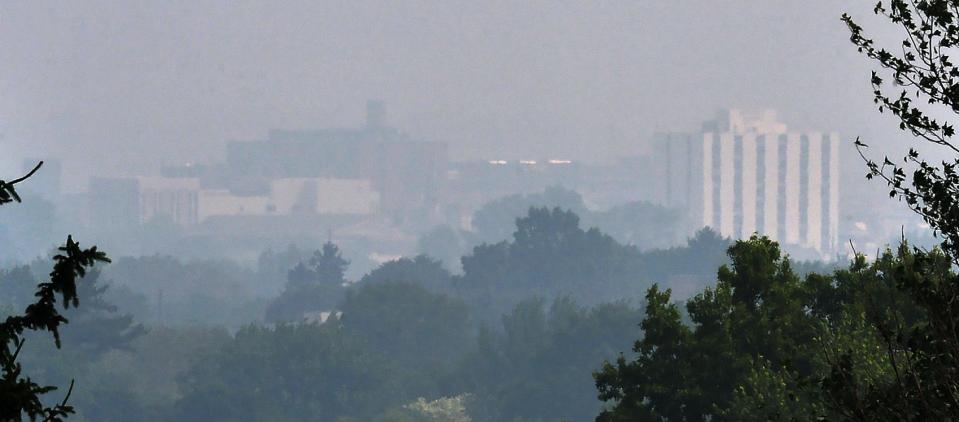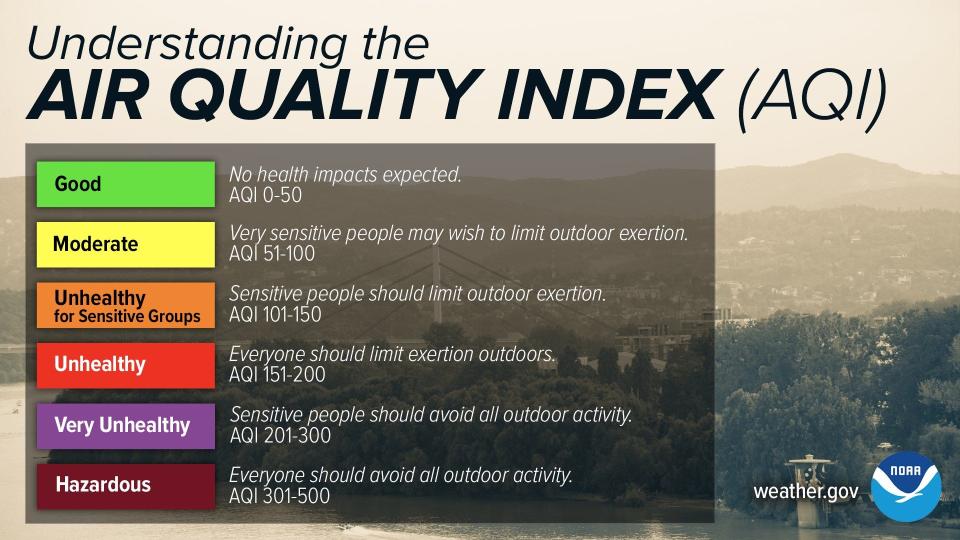Canadian wildfire season has started. Will Erie's air quality be impacted by smoke?
Smoke from large-scale Canadian wildfires has already drifted into the United States, causing authorities in four upper Midwestern states to issue the state's first air quality alerts of 2024 earlier this week.
The question is whether wildfire smoke will make its way into northwestern Pennsylvania like it did early last summer. There were days when the soot, which smelled like burnt plastic, was thick enough to turn the sky orange and block the sun.
Officials with the Environmental Protection Agency and National Weather Service said it's too early to tell if the Erie region will see similar air pollution this summer.
"It all depends on where the fires originate and how weather events carry the smoke," said David Marsalek, a meteorologist with the Cleveland office of the National Weather Service. "Last year, the fires that affected the southern Great Lakes came from Quebec and traveled south."

Erie reported nine air quality alert days last year between June 1 and July 17, including three days in which the air was considered unhealthy even for people who didn't have lung issues. No such days were reported in Erie from 2018 to 2022.
EPA offers online smoke forecast maps
Though there are no long-range wildfire smoke forecasts available, EPA officials are working to provide more information to the public.
"For wildfire smoke, the AirNow Fire and Smoke map is the best resource for understanding current air quality conditions and what action can be taken to protect your health," EPA spokeswoman Shayla Powell said in an email. "You can access this map and more information at fire.airnow.gov or in the AirNow app."
The National Oceanic & Atmospheric Administration also publishes a website, rapidrefresh.noaa.gov/hrrr/HRRRsmoke/, that forecasts air quality up to 48 hours in advance.
This information is vital to those with allergies and lung illnesses, said Dr. Sean Carroll, a UPMC Hamot ear, nose and throat specialist.
"Allergy patients tend to be sensitive to pollutants and can develop serious issues during events like this," Carroll said. "We treated many of them last summer with inhalants and some needed to be hospitalized."
Air Quality Index offers a good real-time monitor
Routinely checking the region's air quality will be important if wildfire smoke once again reaches northwestern Pennsylvania.
The website airnow.gov updates a city's air quality index every hour.
"What I tell patients is that if the Air Quality Index is 100 or higher, staying indoors is good advice," Dr. Jeffrey McGovern, a Saint Vincent Hospital pulmonologist, said last summer.

Other than monitoring weather forecasts and the air quality index, Carroll said there are limited ways people can prepare for high levels of air pollution.
"If you have seasonal allergies or lung problems that make you more sensitive to pollutants, make sure you take your medications," Carroll said. "But the real treatment is avoidance. Stay indoors with the windows closed when pollution levels are high. Wear a face mask if you must go outdoors."
Contact David Bruce at dbruce@timesnews.com. Follow him on X, formerly Twitter, @ETNBruce.
This article originally appeared on Erie Times-News: Erie weather: Canadian wildfires may impact air quality this summer

